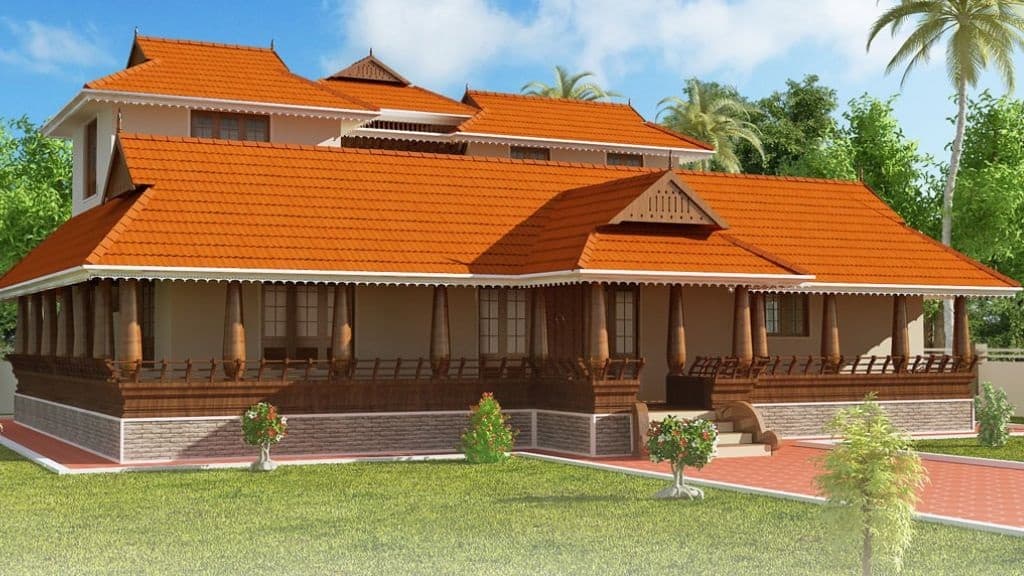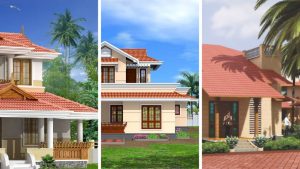
Understanding a Simple Traditional Kerala House Design
Kerala is renowned for its lush vegetation, kind locals, and mouthwatering cuisine. It is the place where the annual monsoons begin to arrive around the first week of June.
The state receives its fair share of enormous greenery and dense foliage as a result of the state’s frequent and strong rainfall. One visual wonder to keep an eye out for is the ‘land of coconut trees.’
Kerala, one of the nation’s most vivacious, colorful, and educated states, is also known for having some of the nation’s most exquisite buildings. Kerala houses have a unique history to share, and you will be much inspired by their lovely furnishings, color schemes, and use of light materials.
Keralan interiors are all on minimalism and place a strong emphasis on the state’s traditional building techniques. Read through the blog to know more about simple traditional Kerala houses.
The architectural principles of the Thatchu Shastra, or the Science of Carpentry, and the Vaastu shastra, or the Science of Building, provide the foundation of the state’s traditional dwellings.
In complete accordance with Vaastu shastra, which stipulates that a house’s entrance must be situated either in the East (preferable) or the North, houses were built ideally facing the East. Local resources were employed to create an architecture that is distinctly vernacular in every way.
The roofs of a simple traditional Kerala house
If you visit Kerala, one feature that will undoubtedly attract your eye is the roofing of the homes there. There are no flat roofs since the area experiences extremely high rain. People reside in homes with pitched or sloping roofs that are decorated with lovely tiles.
The roofs are covered in clay tiles that are supported by robust timber rafters. They may be found nearby and give a Keralan home a rustic appearance. They perform the crucial task of keeping the inside of the home cool, and the roof pitch makes it easier for water to easily drain off the roof. Although they can also be black or brown, the roof tiles are often red.
The doorway to a simple traditional Kerala house
The name ‘Paddipura’ refers to the front door of a Keralan home. The Paddipura starts with the house’s front fence and features a classically detailed door with a tiled roof that is either slanted or curved at the top.
This has been changed to reflect the fact that practically everyone owns a car in today’s society. Large and elaborate entrance gates have been installed in place of the traditional Paddipura door. The roof is still there.
Your Kerala-inspired home’s entryway might be designed with lovely landscaping. Think of growing creepers and bright flower climbers from the entry gate’s curving roof.
Choose elaborate decorations for the gate grilles. Keep your color scheme earthy by sticking to browns, yellows, reds, and greens since they go well together.
Verandas and porches
The Poomukham, a sizable covered veranda area, is seen as you approach the home. The veranda appears to be extending out from the front facade and abutting the remainder of the house. There is a short set of steps to go in order to reach the Poomukham.
The pillars that support the roof over the veranda may also be historically adorned. The majority of Keralan households would likely include a chair in the Poomukham; this is the customary seat for the family head.
Your personalized Poomukham might contain a number of potted plants. You might add a twist by substituting a swing with side cushions and exquisitely designed mattresses for the family’s head chair. By surrounding the pillars with bushes, you may give them some interest.
Charupady
The open Poomukham’s traditional parapet-style seating is often built of wood or cement. Carved wooden boards that were also employed as the Poomukham’s parapets are used as the backrests. This gives the design an additional element of ornamentation and gives the house a lovely elevation.
Center Courtyard
One of the main features of the simple traditional Kerala house is the central courtyard, which is an ideal illustration of well-planned open spaces. The Nadumuttom, or courtyard, is the focal point of a Keralan home. According to Vaastu Shastra, which calls for a column-free area in the central grid of a home, it is often square in design and is situated in the precise center of the building.
Resources used in construction
Wood and bricks are the two most common traditional building materials used in Kerala dwellings. The roof’s rafters, beams, columns, staircase paneling, the Poomukham’s parapets, and even elaborately carved pillars are all made of wood. Teak or rosewood, which are both of high quality, must be utilized. Furthermore, bricks and cement are employed, and reinforced concrete may even be used to build contemporary dwellings.
Types of houses in Kerala: Contemporary homes with traditional Kerala house designs as inspiration
The open floor plans and expansive design of traditional Keralan homes, as well as the nalukettu style of architecture with its sloping roof, tiny veranda supported by tall pillars, and smaller courtyard in the center, have all been integrated into modern residences in Kerala.
Along with residences, hotels, restaurants, and spas have all been influenced by traditional house designs. Modern lifestyle modifications are made to various characteristics in contemporary home designs.
Modern homes have an advanced structural design that includes traditional components like hardwood furniture, pillars, and courtyards.
Conclusion
Benefits of Keralan traditional homes
The ancient Keralan style of architecture has several benefits. Using local, organic materials boosts longevity and encourages greater attention to detail and craftsmanship. Also, they are more affordable. Some of the locally available, easily accessible, and sustainable materials are laterite stone, wood, clay, bamboo, and granite. Granite slabs are buried beneath the earth in traditional Keralan homes to keep out moisture. The slanted roofs’ thatch and clay tiles help keep the dwelling dry. Keralan traditional homes are created in tune with their natural environment and are energy-efficient. Courtyards, walls, and interior partitions are intended to encourage constant airflow and cross-ventilation in order to maximize natural light and air passage.
Simple Traditional Kerala House:
1. What material was the flooring in simple traditional Kerala houses constructed of?
Many homes are known to have had red-oxide floors. Another name for this flooring is kaaviyidal. Traditional homes frequently had hardwood floors and clay tiles.
2. Which type of wood was utilized to build Keralan traditional homes?
For the doors and windows, teakwood and jackfruit tree wood were utilized.
3. What additional names for Keralan traditional homes are there besides nalukettu?
The names for the nalukettu homes might alternatively be tharavadu, kovilakam, kotare, meda, or illam.





